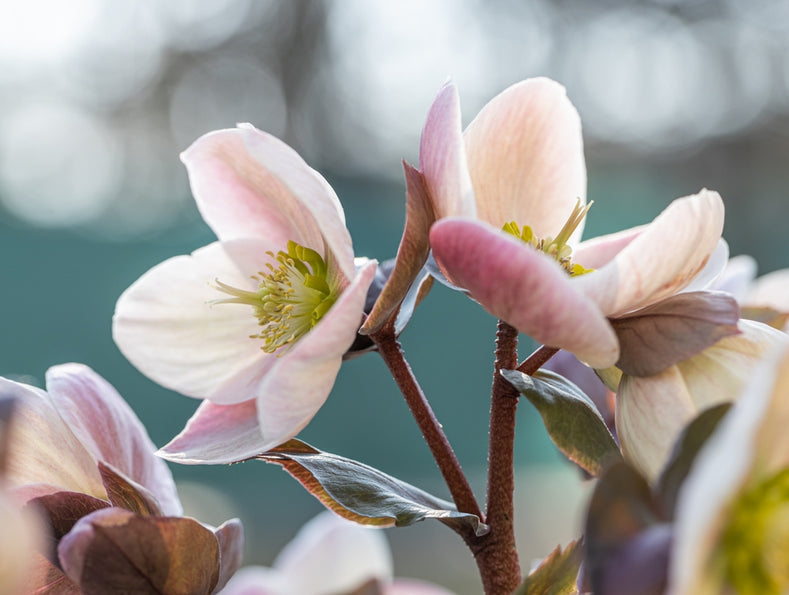Helleborus, commonly known as hellebores or Lenten roses, are a genus of perennial flowering plants belonging to the family Ranunculaceae. They are native to Europe and parts of Asia, and they are highly valued for their attractive flowers and ability to bloom during the winter and early spring when few other plants are in bloom.
Growing Helleborus is easy. They grow best in rich soil that can retain moisture, and are very flexible in terms of sunlight exposure. As a woodland plant though, they tend to do best in the shade. Once established, they don’t need much water or fertiliser, which makes them very easy to care for.
Appearance: Hellebores are herbaceous plants that typically have dark green, leathery, and toothed leaves. The leaves are divided into several segments and form a clump at the base of the plant. The flowers of hellebores are bowl-shaped or saucer-shaped, and they come in a variety of colors, including shades of white, green, pink, purple, and even blackish-purple. Some species also have speckled or veined petals, adding to their charm.
Blooming Season: Hellebores are known for their early bloom time, often starting to flower in late winter or early spring, depending on the region and species. They can provide a much-needed burst of color to the garden when other plants are still dormant. The flowers can persist for several weeks or even months, depending on the weather conditions.
Hardy and Shade-Tolerant: Hellebores are generally hardy plants that can tolerate a wide range of climates. They thrive in cool to temperate regions and can tolerate frost and snow. Hellebores also excel in shaded areas, making them popular choices for woodland gardens or areas with partial shade. However, they can also tolerate some sun if the soil is consistently moist.
Cultivation: Hellebores prefer rich, well-draining soil that is slightly acidic to neutral in pH. They require consistent moisture but should not be overwatered, as excessive moisture can lead to root rot. These plants are typically low-maintenance once established and can be long-lived.
How to Grow Helleborus:
- Choose a spot with partial to full shade.
- Prepare rich soil, high in organic matter.
- Dig a hole large enough to accommodate the root without bending them on soil level.
- Space them 40cm apart so they have room to grow.
- Add a layer of compost or leaf mold. Repeat annually.
- Water sparingly. They like moist but not soggy soil.
In the winter, cut back the old leaves right before flower buds start to appear. Once the new flowers emerge, add your annual layer of mulch, compost, or leaf mold to help encourage the new flowers’ growth.


